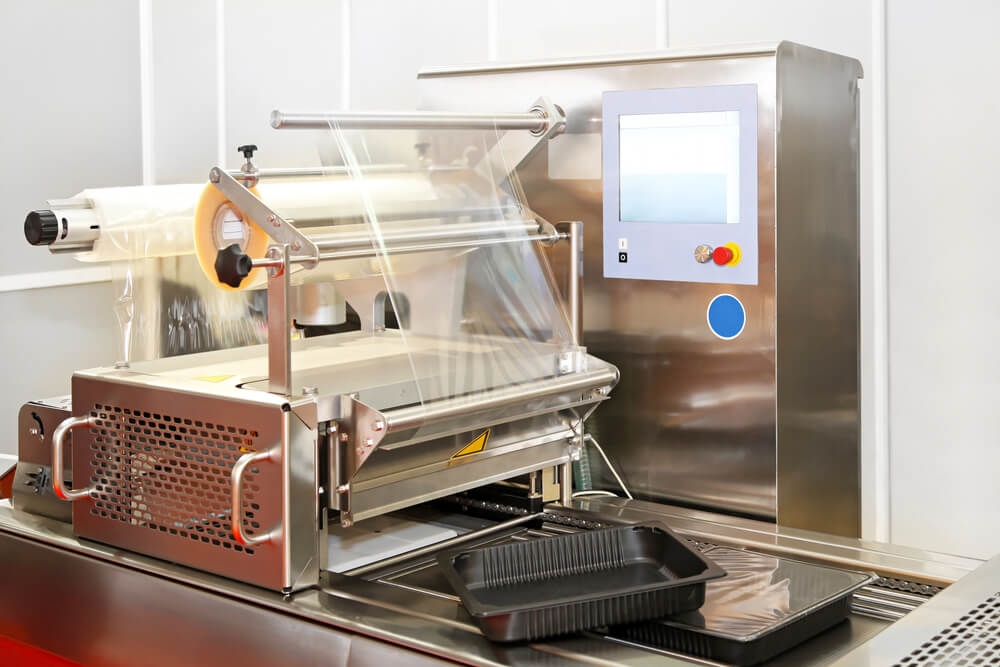7 Common Types of Packaging and When They Work Best

Experts predict that by 2030, the global shipping and logistics market will hit $5.9 trillion, an increase of nearly 60% compared to 2023. This enormous growth reflects the interconnectedness of modern B2B. Whether your company sells medical devices, semiconductors, or components for industrial automation, shipping plays a major role in your operations. Understanding the types of packaging materials available and their advantages can improve your results significantly.
What Are the Main Types of Packaging?
Depending on the size of your organization, you may need dozens of different types of packaging for raw materials, parts, and finished goods. Making the right choices can save you money and lower your overhead.
Primary, Secondary, and Tertiary Packaging
Packaging falls broadly into three layers: primary, secondary, and tertiary. These categories cover the journey of components from production to delivery.
- Primary packaging comes into direct contact with parts and products. This layer provides protection and support along the supply chain—from your facility to the client’s shelves. Examples include thermoformed plastic trays, product wrappers, blister packs, glass bottles, and plastic tubes.
- Secondary packaging is closely related to transportation, warehousing, and storage. Product bundles and corrugated boxes improve inventory organization and provide added protection during shipping.
- Tertiary packaging is designed for industrial applications. These strong barriers include pallets and crates. They’re essential for keeping parts dry, safe, and secure on the road and in storage facilities.
Industrial vs. Consumer Packaging

The types of packaging materials you need depend on your target customers. Consumer-oriented packaging places heavy emphasis on branding and appearance, using materials that support full-color printing. Common examples include plastic tubes, laminated pouches, and paperboard cartons.
For industrial packaging, functionality is more important than style. By using multiple high-quality protective layers, you ensure your products reach their destination in excellent condition.
You need to consider material thickness, durability, impact resistance, and vibration resistance. In some industries, you also need to meet regulatory standards, such as FDA-approved food-grade plastic trays.
Protective Packaging
Protective packaging materials include bubble wrap, foam inserts, and custom-formed plastic trays. These materials add extra cushioning, support, and impact protection to containers.
If an employee carelessly drops a box of precision parts, protective packaging helps distribute the shock and reduces the chance of breakage. Some packaging materials also serve as insulation, which helps products avoid temperature extremes during transport.
What Kinds of Packaging Are Used in Your Industry?
The most useful types of packaging vary by industry. For example, medical device manufacturers, testing labs, and pharmaceutical companies rely heavily on medical-grade plastic trays. On the other hand, beverage makers go through approximately 2 trillion aluminum cans, plastic bottles, and glass containers every year.
1. Blister Packs
A blister pack combines a plastic tray with a sealing layer usually made of foil or plastic. Blisters are especially common in the pharmaceutical industry for over-the-counter pills and medications. These standardized plastic trays often have individual spaces for pills, tablets, or gel caps.
2. Thermoformed Plastic Trays
In addition to containers for blister packs, thermoformed plastic trays also come in open configurations that are excellent for in-plant production and manual storage. The thermoforming process creates pockets of different shapes, from large squares to small round pockets.
Electronics parts manufacturers use stackable thermoformed trays extensively. Deep pockets hold optical components, and shallow grids are perfect for semiconductors.
3. Clamshell Containers
Clamshells use the same process as other thermoformed containers, but they have a large opening at the top. Depending on the product, you can seal them with plastic film, an upper cover, or a shrink-wrapped layer.
4. Cans and Bottles
Laminated tin cans are a common type of packaging in the food processing industry, and tin-coated metal containers also work well for paint, glue, and some industrial chemicals.
Coated aluminum cans are excellent for carbonated beverages and acidic foods like tomatoes. Aluminum is easy to shape, lightweight, and versatile for branding, making it ideal for consumer products.
Plastic containers are more adaptable, with countless sizes for everything from soft drinks to injectable medications. You need to use different types of plastic for pharmaceutical applications, such as eye drops, inhalers, IV fluids, and nasal sprays.
Sterile glass bottles are also used in pharmaceutical manufacturing. Glass is neutral, nonreactive, and protected against outside contamination. Amber glass can also filter UV rays.
5. Corrugated Boxes
No supply chain is complete without corrugated boxes. Finding a balance of cost and quality is important. Box shapes and thicknesses need to be appropriate for your operations, with heavier durability for transportation.
6. Shrink Film and Plastic Wrap

Shrink wrapping and seal bands are a secondary type of packaging. After heating, the plastic shrinks tightly around products to hold them in place, seal them, and offer some environmental resistance. Manufacturers frequently use them to group individual items, especially glass or plastic bottles.
Plastic wrap doesn’t shrink, but it plays a similar role for logistics. It can tie pallets of boxes together for stability and moisture protection.
7. Pouches
Metalized plastic or laminated foil pouches are growing in popularity for consumer and industrial applications. These lightweight, moisture-proof, and often resealable packages can hold solid foods, liquids, gels, and oils easily. The main downsides are the low protection factor and the fact that nothing prevents individual parts from colliding or scratching in transit.
Which Types of Packaging Materials Does Your Business Need?
In addition to looking at product dimensions and thickness, your business should consider the types of plastic packaging you select. Specific types of plastic offer advantages for cost-effectiveness, strength, rigidity, flexibility, and reusability. Here are a few examples:
- Food-grade thermoplastic trays (PET, HDPE, LDPE, PEN, ABS, etc.)
- Expanded polystyrene trays
- Polyethylene bags
- Medical-grade plastic trays and blisters (PE, high-impact polystyrene, thermoplastic polyurethane, polycarbonate, etc.)
- Skin packaging (usually LDPE)
Some plastics are better than others at keeping out oxygen, moisture, chemicals, and dust particles, which is vital for electronics. Similarly, both hardware manufacturers and medical device manufacturers use thermoplastic trays, but the packaging composition is different.
Ideal Packaging Solutions for Your Operations
Cost is usually one of the biggest factors when selecting packaging types, but it shouldn’t be the only one. Quality and performance are equally important.
At Ready-Made Plastic Trays, we have decades of expertise providing custom plastic packaging trays for medical, electronics, science, and manufacturing applications. Our stock and custom-designed solutions cater to industries that require durability and precision. From shipping to storage, we ensure your products are packaged securely and efficiently.
Contact Ready-Made today to learn more about our custom plastic trays and how they can elevate your packaging solutions.
